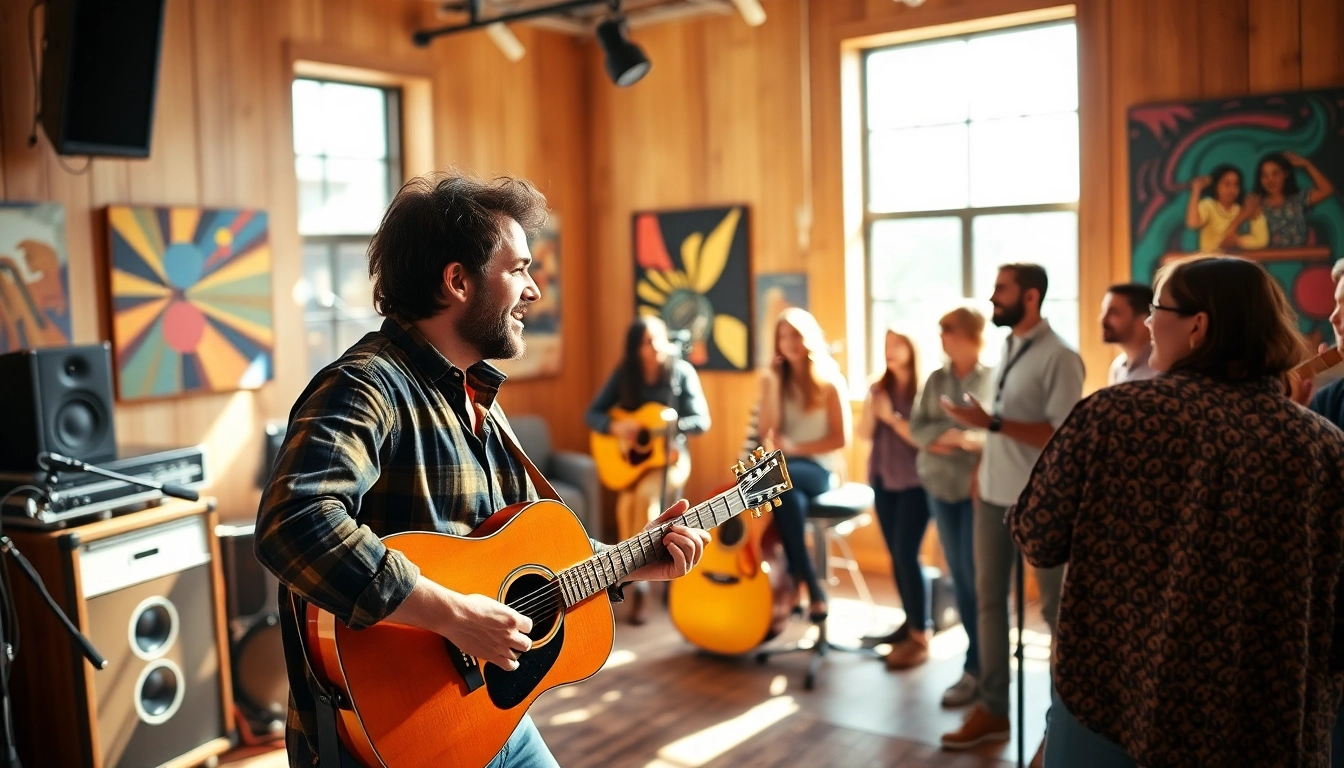Understanding the Basics of Music Pitching
What is Music Pitching?
Music pitching is the process through which artists, songwriters, and music producers present their music to various stakeholders in the music industry, such as radio stations, playlist curators, music blogs, labels, and influencers. The goal of music pitching is to secure placements that will help amplify exposure, drive streams, and ultimately foster a larger fan base. It’s crucial to understand that music pitching is not just about delivering your tracks; it involves crafting compelling narratives around your music that resonate with the recipient’s preferences and needs.
The Importance of Music Pitching in the Industry
In an age where countless songs are released daily, music pitching has become essential for distinguishing your work from the vast sea of independent releases. By creating a targeted approach, artists can increase their chances of reaching the right audience. Successful music pitching can lead to playlist placements on platforms like Spotify, featured spots in music blogs, or even on airplay for radio stations, significantly increasing reach and sales opportunities. Understanding the dynamics of pitching is vital for any aspiring musician navigating the contemporary music landscape.
Common Types of Music Pitching
There are several forms of music pitching that artists should consider:
- Playlist Pitching: This involves submitting music to playlist curators, particularly on platforms like Spotify and Apple Music, where playlist placements can lead to increased streams and visibility.
- Blog and Online Publication Submissions: Targeting music blogs and online magazines can help in getting reviews or features that bring attention to your music.
- Radio Airplay: Traditional radio still holds relevance, and pitching songs to radio stations can lead to plays that reach broader audiences.
Preparing Your Music for a Successful Pitch
Creating a Professional Demo
Your first step in the pitching process is ensuring that your music is presented professionally. A well-produced demo is essential for making a positive first impression. This means not only high-quality audio files but also having an engaging cover art that fits the genre and theme of your music. Each demo should encapsulate the essence of your artistry in a concise manner, making it easy for the receiver to understand your sound immediately.
Identifying Your Target Audience
Understanding your target audience is critical when approaching music pitching. Are you aiming for indie playlists, mainstream pop editors, or niche genre blogs? Researching your listeners and the type of music they engage with allows you to tailor your pitch accordingly. This means not only knowing the platforms where they discover new music but also the stakeholders within those platforms who resonate with your sound.
Crafting an Effective Pitch Email
Your pitch email is often the first point of contact and must be polished. Start with a compelling subject line to grab attention. In the body of your email, introduce yourself briefly, highlighting any milestones or unique aspects of your music. Include a link to your music (preferably a streaming link), and consider adding a short bio and relevant press features. Remember to keep it concise and ensure you convey why your music would be a valuable addition to their playlists or publications. Resources for guidance on composing an effective pitch can be found in articles about music pitching.
Navigating Different Platforms for Music Pitching
Pitching to Playlist Curators
Spotify, Apple Music, and other streaming platforms have playlisting as a focal point of music discovery. When pitching to playlist curators, consider the genre, mood, and themes of your track to ensure a good fit. Use services like SubmitHub or Groover that facilitate the process of connecting with various curators, or find direct submission links they provide through their social media or websites. Always follow submission guidelines and personalize your pitches to increase your chances of acceptance.
Engaging with Music Blogs and Influencers
Music blogs and influencers play a crucial role in music discovery. Research blogs that cover your genre and develop a list of contact details. When reaching out, be aware of any submission guidelines provided by the blog or influencer’s website to avoid having your music ignored. Offer unique angles or stories behind your song that would intrigue writers and inspire them to feature you. Building relationships with influencers, often through social media engagement, can also foster long-term promotional opportunities.
Utilizing Social Media for Music Pitching
Social media is a powerful tool in music pitching. Platforms like Instagram, Twitter, and TikTok allow artists to connect directly with fans as well as industry professionals. Use these platforms to showcase snippets of your music, engage with audience feedback, and participate in genre-specific conversations. TikTok, in particular, has gained traction for driving music trends, making it essential for artists to leverage creativity in their posts. Don’t hesitate to share your pitches as authentic content, which can resonate more with audiences than mere self-promotion.
Best Practices in Music Pitching
Do’s and Don’ts of Music Pitching
When it comes to pitching music, adhering to best practices can significantly affect your success rates:
- Do: Personalize each pitch to the recipient and their platform.
- Do: Keep your pitch concise and focused, providing all necessary information without overwhelming the reader.
- Don’t: Spam multiple curators or publications simultaneously; this can damage your credibility.
- Don’t: Neglect to follow up after a reasonable time frame, as persistence can demonstrate your commitment, but avoid bombarding the recipient with excessive contact.
Following Up: When and How
Timing your follow-up after sending out a pitch is crucial. A general guideline is to wait about one week before reaching out again, but this can depend on the recipient’s volume of submissions and their stated response timeframe if available. Keep your follow-up brief, reiterating your initial message, thanking them for their time, and politely inquiring about their thoughts on your submission. This can serve to remind them about your pitch while also showing that you respect their process.
Measuring the Success of Your Pitches
After launching your pitches, it’s essential to analyze their performance to gauge success. Monitor metrics such as the number of responses received, placements achieved, and engagement on your music upon release. Tools like Spotify for Artists offer insights into how listeners interact with your music post-release, which can inform future pitching strategies. Use feedback from curators and results from your pitches to refine your approach continuously.
Case Studies and Real-Life Examples
Success Stories from Indie Artists
Many indie artists have successfully elevated their careers through effective pitching. For instance, the band “Pom Pom Squad” leveraged their unique storytelling and a compelling pitch email to secure features across prominent music blogs, resulting in significant streaming boosts and media exposure. They created a buzz about their new releases by linking personal anecdotes and trajectories in their music, drawing in the curators who wanted to tell their story.
Analyzing Failed Pitches: Lessons Learned
Not every pitch will land; analyzing why it didn’t succeed can provide valuable insights. For example, an artist may have sent out their track to multiple playlists without personalizing the email or failing to fit the specific theme of the playlists. Taking note of common points of rejection, such as unclear artwork or proposals, and refining them can improve future pitches. Avoid broad-spectrum approaches by narrowing your focus on select curators, as showcasing your music in a tailored manner increases the overall quality of your submissions.
Innovative Strategies in Music Pitching
Creativity plays a significant role in music pitching. Utilizing data analytics to understand which genres are trending or identifying playlist themes that align with your music can present strategic opportunities. An example is using meme culture or trending TikTok challenges to create buzz around a song, organically prompting playlists to take notice. Engaging with fans to share your music also amplifies its reach, merging grassroots efforts with professional pitch strategies.



